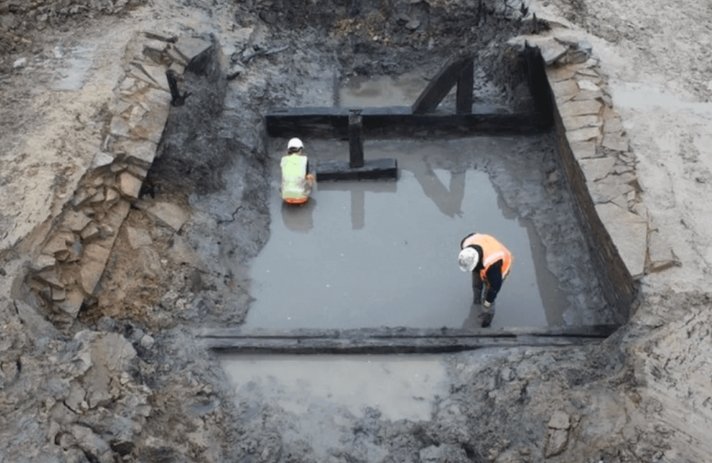In the quiet countryside of Gloucestershire, archaeologists have unearthed a remarkable piece of history: a medieval moat surrounding the remnants of Cowfield Farm. This discovery at the site near Tewkesbury Abbey offers a rare glimpse into the life of the medieval peasantry, revealing a complex social structure and the unexpected use of moats in rural England.
The Discovery
The excavation at Cowfield Farm has brought to light the foundations of a 12th or 13th-century farmhouse, guarded by a moat of significant historical value. The presence of a moat, typically associated with castles, indicates the farmhouse’s importance within the medieval community.
Researchers found evidence that the moat was filled with water, aligning with Christian symbolism where water represents purity. This suggests that the moat served both practical and spiritual purposes, providing security and symbolizing the sanctity of the household.

Insights into Medieval Life
The findings at Cowfield Farm paint a picture of a society where even wealthier peasants employed defensive structures like moats. The artifacts recovered, including a pilgrim badge and a book clasp, hint at the religious and cultural practices of the time.
The discovery of a bridge over the moat, dated to the 15th century, further emphasizes the farm’s long-standing significance. These remnants offer a tangible connection to the past, allowing us to understand the daily lives of those who once inhabited the land.
The Social Implications
The moat’s excavation sheds light on the social hierarchy of medieval England, where even non-noble rural dwellers invested in protective measures. It challenges the traditional view of moats as exclusive to the elite and highlights the nuanced social landscape of the era.
The Cowfield Farm moat stands as a testament to the ingenuity and resourcefulness of medieval farmers. It underscores the importance of such historical sites in piecing together the complex tapestry of England’s past.














